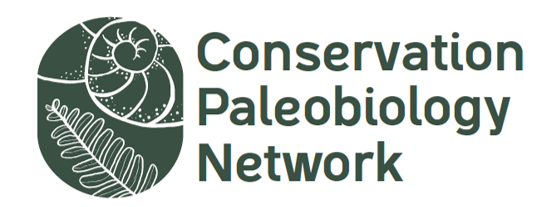When you first think of Hong Kong, or Google search it, the last thing you would expect to find is incredible marine biodiversity. With almost 8 million people living in a developed area an order of magnitude smaller than Luxembourg, it once claimed the title for most densely populated place on Earth. Almost 10% of the city’s landmass is built upon reclaimed land (“reclaimed” as in garbage and sand dumped into the oceans to create new land). There was no wastewater treatment whatsoever for the country until the early 1990’s. With perhaps one of the most urban city skylines in the world, Hong Kong is an odd choice for someone to choose for a marine biology Ph.D., particularly one that focuses on sensitive species such as corals.
Thankfully, the old idiom “never judge a book by its cover” could not ring any truer than for a place like Hong Kong. Amidst the turmoil, Hong Kong harbours more than 25% of all marine diversity ever recorded in China, even though it only accounts for about 0.03% of its marine coastline. This includes over 85 species of hard coral. It is truly incredible to be able to go (using public transit) from the dense urban jungle shown above, to jungle covered volcanic islands and diverse underwater sanctuaries (shown below). In my opinion, this environmental juxtaposition is what makes Hong Kong a truly special place. Yet, as with many urban areas, the rich biodiversity is being increasingly stressed and destroyed by large-scale development, pollution, and resource extraction.
In the first chapter of my dissertation, I investigated the historical diversity of Hong Kong’s coral communities, in hopes that I could better identify their major stressors. When we compared the collected fossil data to a modern-day coral survey dataset, we found several striking conclusions. First, there has been about a 40% decrease in the number of different coral genera living in Southern Hong Kong waters. Second, the greatest coral loss was of the ecologically important yet highly-sensitive staghorn corals (Acropora), which now only live in an area about 50% smaller than its historic range. Finally, the greatest impact and loss of corals occurred in waters that are closest to the Pearl River Estuary (a highly developed and polluted river) in the southwest and Tolo Harbor in the Northeast. The overall conclusion: poor water quality driven by increased development and lack of proper treatment is presently the regions greatest threat to the survival of corals.
Although it would be perfectly acceptable from a paleoecological perspective to have stopped there, being involved in the Conservation Paleobiology community has made me realise how this ancient data can be used positively. Taken another way, conclusions from my study could be viewed as “here is where certain corals used to live, so perhaps if we relieved the known stressors that extirpated them, they could live again.” To date, Hong Kong has avoided many of the global climate impacts that plague other major coral reef ecosystems such as the Great Barrier reef – there has been minor ocean warming and to date no large-scale thermal bleaching. Thus, the primary focus of conservation and management should be the relief of poor water quality.
Conservation PaleoBio in Action
This study led to specific and actionable outcomes that could help restore Hong Kong corals: clean up the water quality, and the marine ecosystem may stand a chance. Since the 1990’s, two large scale wastewater treatment plants have been built in Hong Kong. Further, the government has enacted large scale shipping and dumping laws, and enacted a trawling ban for fishing, all aimed at improving water quality and marine biodiversity. Hong Kong’s marine waters are far from pristine, but they are no longer getting worse. Indeed, through these government led initiatives, there are certain bays in Hong Kong that are cleaned to the point where they can once again sustain marine life.
This is where our Conservation Paleobiology-oriented lens can lend a helping hand. Through my research, we now have tangible data that shows what should have lived in these bays, prior to wide scale degradation from poor water quality, and what species should be targeted for restoration. Using this information, PhD Candidate Ms Vriko YU (also from the same lab as me – The Baker Lab at the University of Hong Kong), pioneered a coral restoration project in Hoi Ha Wan Marine Park in collaboration with the local government. This project aims to restore and better understand what it will take to save Hong Kong corals. Vriko and I have worked in collaboration to harness my historical data and infer the appropriate steps needed for successful coral restoration. Led by Vriko, the lab has returned corals such as Acropora that previously thrived in Hoi Ha, back to their proper home. She has also taken restoration a step further, by adding in several experimental elements – such as tile design and material, and coral recruit size and species distribution – in order to see what will work best for Hong Kong specifically. To date, 100% of the reintroduced coral have survived. Furthermore, Vriko has documented several coral associated invertebrates at the site, showing that this restored habitat is indeed increasing biodiversity.
Although it only represents one small case study, I believe this is what it means to be a Conservation Paleobiologist. Not only just collecting the data on old dead things, but finding ways to apply it for future conservation efforts. It is one small step in the right direction for our ecosystems. I am happy to have played a part in this awesome coral restoration project, which is rightfully getting a lot of press. As a paleobiologist, it’s nice to finally be part of a happy story for a change, rather than only documenting something that is long dead. Let us hope as our community grows, projects like this can become the new norm.

Author: Jonathan Cybulski cybulski.j@gmail.com
Jonathan is a post-doctoral fellow in the Swire Institute of Marine Science at the University of Hong Kong. He is also the 2021 Earl S. Tupper post-doctoral fellow at the Smithsonian Tropical Research Institute.

